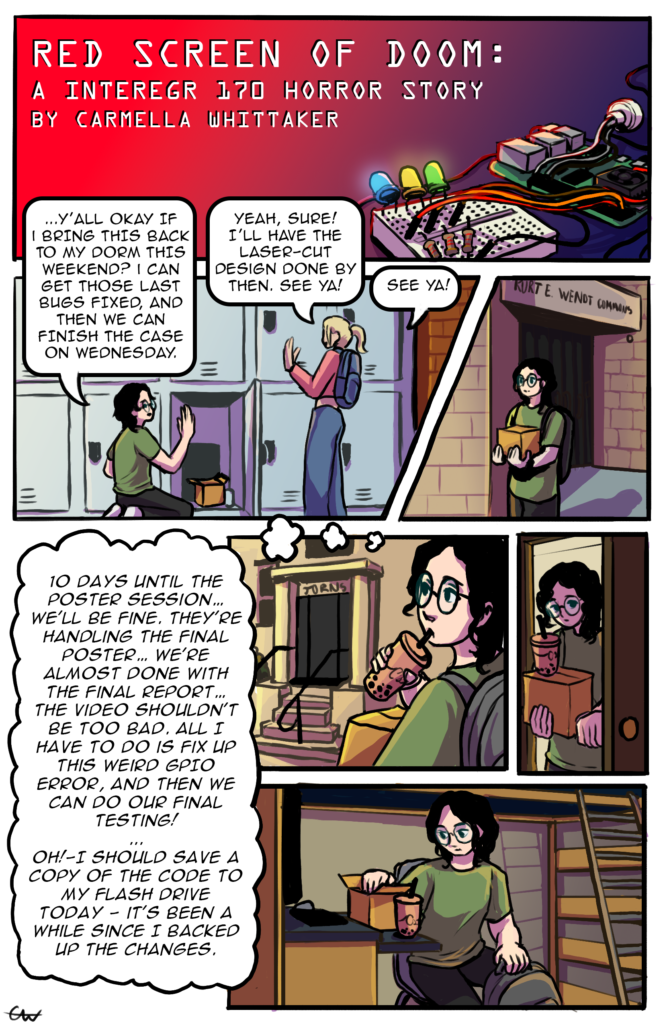Experiencing real-world engineering in my first semester at UW-Madison.
The first semester at UW-Madison as a freshman engineer is challenging, not just because of the classes. No matter how comfortable you are in CHEM 103, MATH 222, or any other of the freshman-heavy “weed-out” classes, college is a major change. Adjusting to an independent life is enough to be its own 3-credit course. Within their first days at UW-Madison, new students are questioning if engineering is the right choice, experiencing imposter syndrome, worrying about first-year progression, and making four-year plans that stray closer to five.
The university’s answer to these unknowns is InterEGR 170: Design Practicum, a required introductory course for biomedical, civil, environmental, and undecided freshman engineering students. In this course, a group of freshmen are tasked with creating a device that will solve a client’s problem. For the rest of the semester, they design, fabricate, and test a prototype; along the way, there are training sessions to use the menagerie of tools available in the Makerspace, such as the laser cutters, 3D-printers, and woodworking machines.
The class teaches more than just technical skills – out of necessity, teams develop communication techniques, delegation and time management methods, and good documentation habits. The lecture component of the class covers assignment rubrics, engineering majors and certificates, and the resources available to UW-Madison engineers. The lessons emphasize that students need to experience working in a team to make the most out of the College of Engineering’s opportunities.
Needless to say, the class can be intense. This past semester (Fall 2023) saw a wide range of projects: organizational displays and dust collectors for the Makerspace, therapy and rehabilitation tools, and model airplane sets. My team and many others worked on a programming-concentrated project, a tricky undertaking given the lack of computer engineers in the class.
The semester was full of small victories and frustrating setbacks. Dealing with fickle hardware and elusive coding errors was not what I expected from my first semester of biomedical engineering. At the time, it was hard to see the project’s relevance to my major. However, in hindsight, the class clearly taught the necessity of adaptation in any engineering career. I may never have to wire LEDs and test passive-infrared sensor ranges again, but no engineer can succeed without documenting their work and navigating group responsibilities.
Attached to this article is a comic rendition of one of the many moments of frustration that arose while working with my team on our InterEGR 170 project. Luckily, we managed to fix our prototype before the end of the semester – but not without facing some obstacles along the way.


The challenges of the class aside, presenting our own original prototype and meeting the client who benefited from our work was a satisfying end to the semester. If hundreds of freshmen can go from complete engineering-newbies to product developers helping real people in just four months, maybe the demanding years ahead will be alright. At least, that’s what I’m hoping for. One of the InterEGR 170 projects was featured in UW News; click below to learn more about one team’s solution to difficulties that arise with transferring into cars with multiple sclerosis.
If you or someone you know may be interested in submitting a project proposal, find more information and the submission process here

